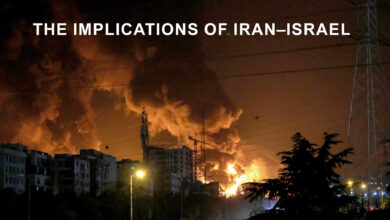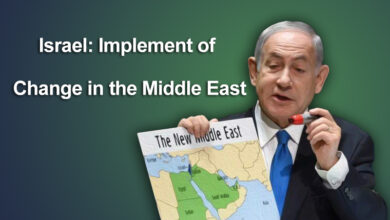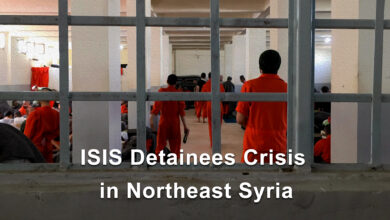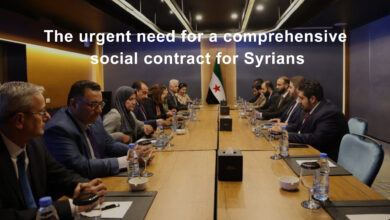Concrete wall on Syrian-Iraqi border
The Iraqi government is working to complete the construction of a concrete wall on its western borders with Syria, adjacent to the governorates of Hasakah and Deir ez-Zor, provided that the wall extends to the entire border at a later time, in order to block the way for the infiltration of ISIS terrorist militants, especially after the recent events the Hasakah city witnessed on January 20, where ISIS militants tried to break al-Sina’a prison and set free their inmates, and also to control the smuggling operations that are active along the border strip, which is more than 600 km long, especially the area adjacent to the city of Abu Kamal in Deir ez-Zor governorate, which is controlled by Iranian-backed militias.
What is striking about the project is that this wall only covered 10 km, and this leaves the question of whether the wall will really be extended to a greater distance or not. According to the Iraqi security authorities, the wall will be equipped with advanced surveillance systems, drones, balloons and thermal cameras.
According to the statement of Hassan Nazim, spokesman for the Iraqi Council of Ministers, the project will be funded by the Ministry of Interior, but there are leaks that international and regional parties finance this project, so the Iraqi government is unable to take this step at this time in light of the stifling economic crisis that Iraq is suffering from.
These events were also preceded by the Iraqi army’s announcement that it had finished digging a trench on the entire Syrian border, with three meters deep and three meters high. It was also followed a visit paid by the head of the Popular Mobilization Forces (PMF) in Iraq, Faleh al-Fayyad, to the Syrian capital, Damascus, where he met the President of the Syrian regime, Bashar al-Assad, and both discussed joint security issues which is related to controlling the borders. This indicates that there is direct coordination with Damascus in this regard.
According to many military and security experts, the goal of the wall is to isolate Shengal (Sinjar) area from its geographical surroundings and impose a security cordon on that area, not to protect the borders as it is promoted in the media, and it is not excluded that Turkey is the proposed and financier of this project, as it has similar experiences in this regard, where it built a wall along the Syrian-Turkish border before that as well, which was ranked as the third longest border in the world. Therefore, the separation wall is not the first of its kind, which makes it a continuation of the isolation policy that Turkey is trying to impose from time to time in order to prevent geographical and political contiguity between the Kurdistan Region in northern Iraq and Rojava (northeast Syria), and to create a rift between the communities of those areas, in addition to preventing the creation of united Kurdish interests in the region, and to besiege the area economically, as well as to allow Turkey to penetrate further into Iraqi territory.
The policy pursued by the Iraqi government with the support of the Syrian regime is nothing but the implementation of Turkey’s agendas, which are trying to target the Kurdish people, paving the way for the arrival of Turkish forces to the vicinity of Shengal and drawing new borders separating the Kurdistan Region from Rojava. In order to achieve this goal, Turkey is ready to coordinate directly with the Iraqi and Syrian governments at the same time, especially since most of its previous attempts to launch a military operation against Shengal were doomed to failure.




